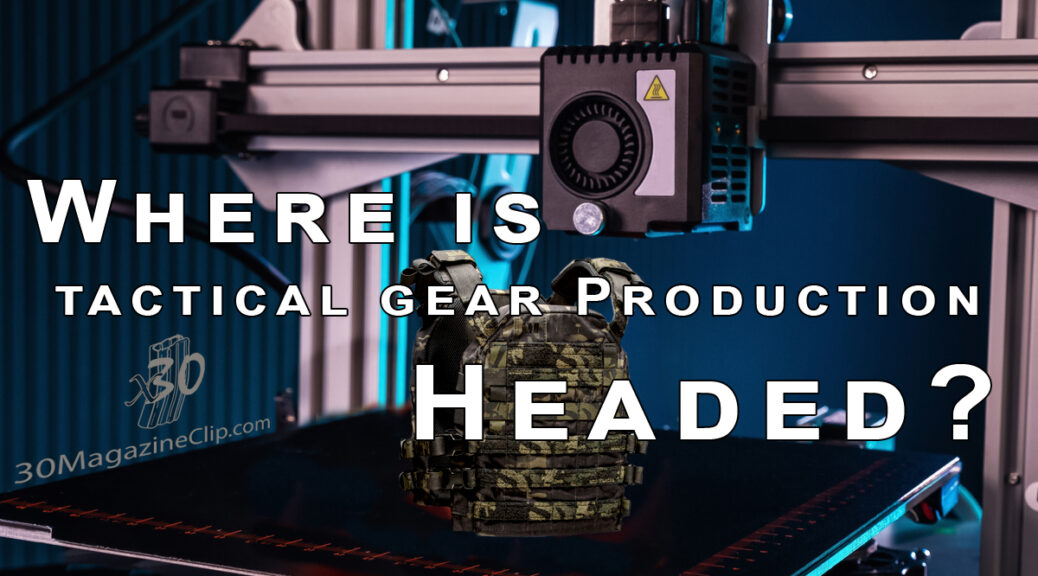I have worked the last 13 years mainly in the design side of the nylon tactical gear industry. I have seen the trends go from LBVs to plate carriers, to micro rigs, to belt setups with suspenders, to belt setups without suspenders, to recce rigs with hundreds of in-between products along the way. Entire companies have sprung up just to invent and manufacture interface devices to smash multiple pieces of industry gear together. I have even been responsible for some of them. These days you can find a piece of gear that will fit just about any mission that you might have. In the event you can’t, there are tons of smaller custom builders (like me) that can produce your one-off project to exact specifications.
But what is the next leap? (And I don’t specifically mean in materials). You could call going from regular old Cordura to laminates and hypalon type materials a leap as it is a much better material to laser cut, but the build process is pretty much the same (i.e. you sew it together to make pockets). I’m talking about the next evolution in textile production – not just for the tactical gear industry, but that is where my experience comes from. I believe it is going to be in the world of 3D printing. That is, 3D printing the fibrous materials in a full (or nearly full) constructed state. Like, hit go on the printer and come back to a finished plate carrier a while later (perhaps a long while). Why would it be with a fibrous material? Today’s fabrics do a really good job of arresting a rip or tear before it gets too bad. This is sometimes referred to as “Ripstop”. This is accomplished by the weave of the yarns that make up the fabric. There’s no reason to throw that away. If you were to print solid flexible sheets instead there is a good chance that a “rip” would continue on over time (perhaps a short amount of time) and eventually render your equipment useless. And I’m not talking about just another plate carrier like we have today. What comes out of this theoretical fabric printer could be a design that contains build geometry that could not be produced on a sewing machine.
Part of my business is building custom solutions for individual soldiers, police, contractors, and larpers. Sometimes those customers will send drawings of what they have in mind. However, they lack the experience of being a stitch-operator like myself. They may not realize that their drawing can’t be made the way they have envisioned it.
For instance the attachment of a piece of fabric to form a pouch on one side might sew another pouch shut on the opposite side of the work. A good gear designer can usually find a way around this, but the situations do get complicated – especially when you consider a lot of these pieces go together in reverse and inside out. It’s a lot to get your head around until you have some time in it. However, most of these concerns would vanish if instead you are building (or printing) your gear a cross-section at a time. Layer stacked on layer of slightly varying geometry resulting in a perfectly reproducible piece every time.
Think about it: no hems, no seems, no need to have extra material folded over to help prevent the threads from pulling through a high-stressed area. Do you need an area reinforced? Simply tell the operating software that “this specific section of the design needs to be stronger” and let it do the work.
What about the camo patterns?
Just print them, too, like everything else. Now, I know this isn’t a viable option yet, but I am fairly confident that once the industry figures out how to reliably print the fibrous nylon material to a high degree of accuracy, varying the color of each layer and area in that layer will be an afterthought. We do it with 2D printers all the time.
If you buy all that, then one would be tempted to think you could have the perfectly reproduced intact camo pattern on every unit produced. Not very clear? Ok, let’s keep thinking of plate carriers. Usually you will see three things on the front of a modern carrier. Base fabric, webbing, and Velcro. All will sport the same pattern.
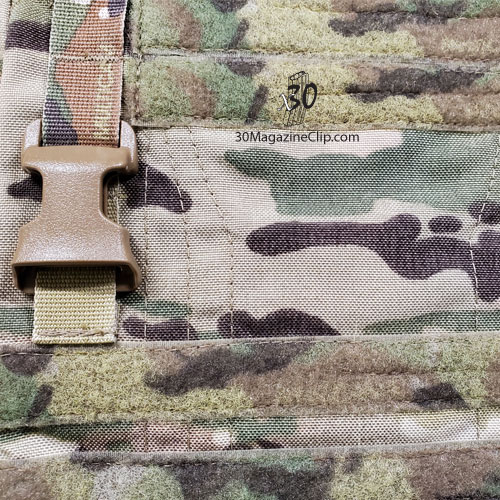
Let’s just take MultiCam for example. I know that the Texcel Industries produced and licensed MultiCam webbing is a pattern that repeats every 12 inches. Yes, I am aware that MMI Textiles produced webbing material has a “longer” pattern before repeating but Texcel is what I had in front of me.
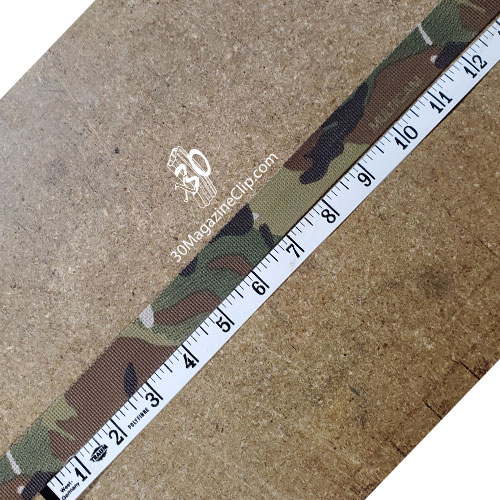
When a producer is cutting off lengths of webbing and Velcro to attach to their base fabric it is never the same portion of the pattern used on each iteration of the product. So, in actuality every single plate carrier with a camo pattern of a certain type (AVS, 6094, EC2, AC1, Thorax, LV119, etc) is quite unique. Not a single one is going to have the exact same combination of different sections of the pattern placed in the same area.
If you are live printing you can make it whatever you want. True replication of the computerized version every time: Geometry and color. So, when looking straight on at a finished product it could appear to be a solid uninterrupted pattern of your choice. Because it would be.
That sounds great. Except that it might be a problem. Sensors are great these days and they are all over the battlefield of today. You know what is getting better every day? Artificial Intelligence and pattern recognition. Computers are great at finding patterns. So, let’s just say the US Army awarded a plate carrier contract to the company that is first able to produce gear in this manner. They crank out 30,000 identical units. Now, in our hypothetical future you have a squad all wearing these identical carriers inside of a tree line. Attempting to stay concealed. I don’t think it would be very far-fetched for a state-level actor to develop an algorithm to detect that specific pattern. It may be hidden from humans very well but not from the electronic eye. Think of a QR code. Your phone knows EXACTLY how to decipher it. Jumble that QR code up or just vary it slightly and the computer can’t read it any better than you or I.
All that to say: perhaps a mandatory variation in the product’s camo pattern would be needed from copy to copy. This is not a problem. Each copy is printed individually anyway. Just tell the computer to randomize the camo pattern on each element of the design.
But what about the polymer?
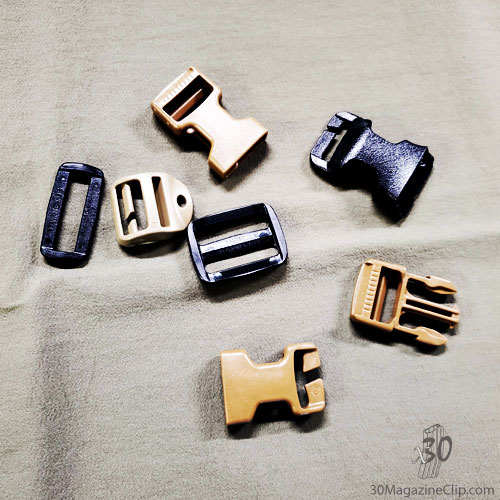
Just print them. The buckles that is. Print them in place. Print them inline and permanently attached to the rig. You could even have camo pattern matching buckles at this point – not just solid colors. I originally thought licensing was going to be a problem. Organizations such as ITW and Duraflex (National Molding) together are responsible for the bulk of the side-squeeze-release and other webbing-attached polymer components. One of those companies could simply issue a license for a producer to print X-Thousand buckles into their own products. Perhaps even better would be a large flat rate to print unlimited buckles for a given time (say, a year). This actually opens up TONS of possibilities. As a gear producer myself I know the pain of getting a brand new ITW catalog to see all the new variations of buckles that have been released. Then I check with my supplier to find out that every piece I want to integrate into one of my designs or simply a color variation of that piece requires a 20,000 piece minimum to order. That would all be a thing of the past. If a gear producer was to obtain a license from a company like ITW they would have access to print the entire line of buckles. That would make a lot of people very happy and open up a lot of smaller producers to the game.
Smaller Stock
You could pretty much eliminate the need to stock large quantities of buckles, webbing, hook/loop (as long as it can be printed as well) and even fabric which take up tons of room.
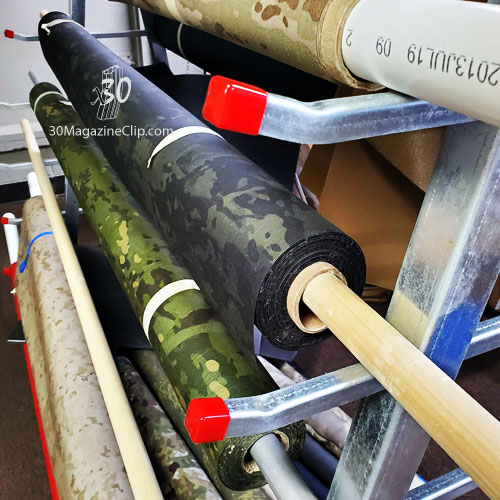
Companies could even experiment with their own camouflage patterns as long as there were no color limitations to the printing. Getting a custom camo pattern printed up on 500D Cordura is a huge investment as it mostly requires printing thousands of yards as a minimum to make it anywhere near cost effective. Once you digest all of that, think about armor. Imagine printing Kevlar or something like it directly into the designs themselves.
Production
I would imagine that these printers are going to be expensive. Especially in the early stages. I find it much more likely that smaller to medium sized companies would use the services of larger production houses that can run 24 hours a day producing products. Simply upload your product and license information for patterns and polymer components. As time goes on you will find more and more printers at smaller companies. Just as the CNC mill used to only exist in the machine shop but are now available to fit on your desk.
If everything mentioned before was possible then it would be a snap for some company to have a web based app where customers can simply design their own gear. Place a pocket here, some padding there, enter credit card info and you have your custom made product in a few weeks.
What’s holding this back?
Well for one.. it doesn’t exist yet. This is all theory, but it’s where I think the industry is heading – the next evolution in production of tactical gear. I don’t see a single reason why this won’t be viable in the near future. Additive manufacturing gets cheaper and better every year.

